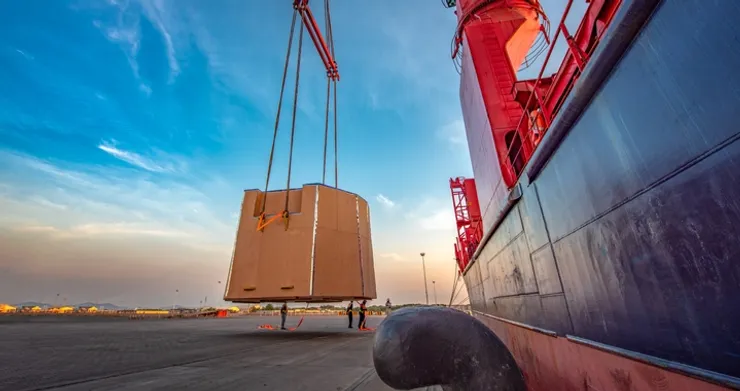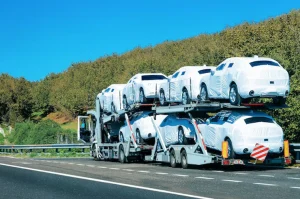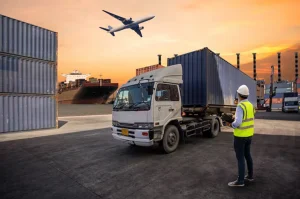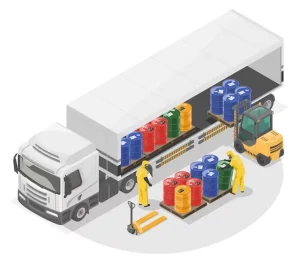What is Oversize Cargo?
Oversize cargo, often referred to as “oversized cargo” or “overdimensional cargo,” refers to shipments that exceed the standard size and weight limitations for transportation on public roads, railways, or waterways. These cargoes are typically larger, heavier, or more dimensionally irregular than the standard cargo that can be transported without special permits or equipment. Oversize cargo can include a wide range of items, such as:
-
Machinery: Large industrial equipment, construction machinery, and heavy manufacturing components are common examples of oversize cargo.
-
Vehicles: Oversized vehicles like trucks, bulldozers, and cranes are often transported as oversize cargo.
-
Infrastructure Components: Large components for infrastructure projects, such as bridge beams, wind turbine blades, and electrical transformers, are frequently considered oversize cargo.
-
Boats and Yachts: Transporting boats, yachts, or other watercraft that exceed standard road dimensions qualifies as oversize cargo.
-
Modular Buildings: Sections of modular or prefabricated buildings that exceed standard dimensions are also considered oversize cargo.
-
Construction Materials: Long and oversized construction materials like steel beams, pipes, and concrete precast elements fall into this category.
-
Aircraft Parts: Components of large aircraft, like wings or fuselage sections, may be transported as oversize cargo.
-
Specialized Containers: Large, non-standard shipping containers designed for specific cargo, such as open-top containers or flat racks, can also be classified as oversize cargo.
The Challenges
Transporting oversize cargo presents a unique set of challenges and difficulties that require careful planning, specialized equipment, and experienced personnel to overcome. Here are some of the key challenges associated with oversize cargo transportation:
-
Regulatory and Permitting Challenges: Oversize cargo often requires special permits and regulatory approvals due to its size and weight. Navigating the complex web of regulations at the local, state, and federal levels can be time-consuming and challenging.
-
Route Planning and Restrictions: Determining the most suitable route for oversize cargo can be difficult. Roads may have weight limits, height restrictions, or narrow passages that make transportation problematic. Specialized route surveys and planning are often necessary.
-
Infrastructure Limitations: Oversize cargo may not fit under bridges, through tunnels, or within certain clearances like overhead power lines. It can also put stress on road surfaces, potentially causing damage.
-
Specialized Equipment: Transporting oversize cargo requires specialized equipment such as flatbed trailers, extendable trailers, or even self-propelled modular transporters (SPMTs). Acquiring and operating this equipment can be expensive.
-
Escort Vehicles and Personnel: Oversize cargo often requires escort vehicles to warn other drivers and ensure safe passage. Trained escort personnel are needed to communicate with the driver and manage traffic.
-
Weather Conditions: Adverse weather conditions, such as heavy rain, snow, or strong winds, can significantly impact the safe transport of oversize cargo. Delays due to weather are not uncommon.
-
Safety Concerns: The transportation of oversize cargo poses safety risks to both the cargo and other road users. Properly securing the cargo and ensuring it doesn’t shift during transit is crucial.
-
Costs: Oversize cargo transportation can be expensive due to the need for special equipment, permits, escorts, and planning. Budget considerations are essential.
-
Time Constraints: Transporting oversize cargo can take longer than standard shipments due to the need for route planning, permitting, and the slower speed of transport. This can disrupt supply chains and project schedules.
-
Risk Management: There is an inherent risk of accidents or damage to the cargo during transportation. Adequate risk management and insurance coverage are essential.
To overcome these challenges, companies specializing in oversize cargo transportation invest in expertise, technology, and equipment to ensure safe and efficient delivery. They work closely with regulatory authorities, conduct detailed route surveys, and employ experienced personnel to manage the complexities associated with moving oversized loads.
How to Overcome Oversize Cargo Transportation Difficulties
Here are some steps to help you overcome oversize cargo transportation difficulties:
1. Detailed Planning and Assessment:
-
Start by thoroughly assessing the cargo’s dimensions, weight, and any special handling requirements. This includes considering the route, bridges, and roads you will use.
2. Regulatory Compliance:
-
Understand the legal requirements and permits needed for oversize cargo transportation. Regulations can vary by region, so research and adhere to local, state, and federal regulations.
3. Route Selection:
-
Choose the most suitable route for transporting oversize cargo. This may involve using highways with wider lanes, avoiding low bridges, and taking into account road weight limits.
4. Specialized Equipment and Transportation Methods:
-
Invest in or hire the appropriate specialized transportation equipment, such as flatbed trucks, lowboy trailers, or modular transporters, depending on the cargo’s size and weight.
5. Secure the Cargo:
-
Properly secure the cargo to prevent shifting, tipping, or falling during transportation. Use specialized tie-downs, chains, and straps as needed.
6. Safety Measures:
-
Implement strict safety protocols for oversize cargo transportation. This includes flagging the cargo with warning signs, using escort vehicles, and employing experienced drivers and crews.
7. Communication and Coordination:
-
Maintain open communication with relevant authorities, such as traffic control, law enforcement, and utility companies, to ensure a smooth transportation process.
Coordinate with local jurisdictions to address any road closures or traffic disruptions during the move.
1. Contingency Planning:
-
Have contingency plans in place for emergencies or unforeseen issues, such as mechanical failures, adverse weather conditions, or accidents.
-
Consider insurance coverage specific to oversize cargo transportation to mitigate potential financial risks.
2. Documentation:
-
Maintain accurate records of the transportation process, including permits, route plans, inspection reports, and incident reports.
3. Post-Transportation Inspection:
-
Conduct a thorough inspection of the cargo and the transport equipment upon arrival to ensure there is no damage.
Successful oversize cargo transportation requires careful planning, adherence to regulations, and a focus on safety. By following these steps and working with experienced professionals, you can overcome the difficulties associated with transporting oversize cargo while minimizing risks and disruptions.
Choosing the Right Transportation Partner
Why Toptrans?
At TopTrans, we understand that oversize cargo transportation comes with its own unique set of challenges. Ensuring the safe and efficient delivery of large and heavy cargo is our top priority, and we’ve developed specialized solutions to tackle these difficulties head-on. When you choose TopTrans as your transportation partner, you can expect a comprehensive range of services tailored to meet your oversize cargo needs. Here’s how we handle oversize cargo transportation difficulties:
Expertise and Experience
🌟 With over seven years of industry experience, TopTrans has gained unmatched expertise in handling oversize cargo. Our seasoned professionals understand the complexities involved and can provide guidance every step of the way.
Specialized Equipment
🏗️ We invest in specialized equipment designed to handle oversize cargo with precision and care. Our heavy-duty trailers, cranes, and lifting gear ensure that your cargo is loaded, secured, and transported safely.
Route Optimization
🗺️ TopTrans takes route planning seriously. We employ advanced route optimization techniques to navigate through challenging terrains and congested areas, minimizing delays and ensuring timely deliveries.
Compliance with Regulations
📝 Oversize cargo transportation involves a web of regulations and permits. Our experts are well-versed in local and international requirements, ensuring that your cargo complies with all necessary regulations.
Safety First
🚧 Safety is at the core of our operations. We implement stringent safety measures to protect your cargo and everyone involved in the transportation process. Our teams are trained to handle oversize cargo safely and securely.
Comprehensive Services
🚚 TopTrans offers a wide range of transportation services, including land, sea, air, and rail options. This diversity allows us to select the most suitable mode of transportation for your oversize cargo, optimizing efficiency and cost-effectiveness.
Customs and Brokerage Services
📦 We understand that oversize cargo often involves complex customs and brokerage procedures. TopTrans provides comprehensive support to streamline these processes, ensuring your cargo moves smoothly across borders.
Real-Time Tracking
📊 We keep you informed every step of the way. Our well-functioning update system allows you to track the progress of your oversize cargo shipment in real-time, providing peace of mind and transparency.
Customer Service Excellence
📞 Our customer service team is here to assist you 24/7. Whether you have questions, need a quote, or require immediate assistance, our dedicated team is just a phone call away. We prioritize quick and efficient responses to your inquiries.
Choosing TopTrans as your oversize cargo transportation partner means choosing a company that understands your unique needs and is equipped to handle the challenges that come with oversized cargo. We are committed to delivering your cargo safely, on time, and within budget. Contact us today to experience the TopTrans difference and overcome oversize cargo transportation difficulties with ease. Your cargo is our mission, and your satisfaction is our success.








